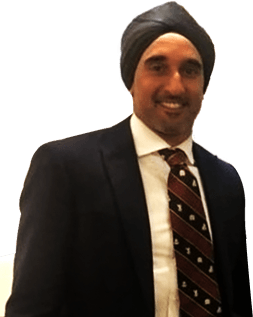
Scapular Fracture ORIF Surgeon in Warwickshire
Scapular (shoulder blade) fractures are usually the result of intense trauma such as a high-speed motor vehicle accident, a fall from a height onto one’s back or a fall on an outstretched arm. Mr Karan Mangat provides diagnosis and individualised nonoperative and operative treatments for the shoulder including ORIF of scapular fractures in Warwickshire. Mr Karan Mangat also provides the highest level of care during and after surgery. Contact Mr Karan Mangat’s office for an appointment today!
What are Scapular Fractures?
The scapula (shoulder blade) is a flat, triangular bone providing attachment to the muscles of the back, neck, chest, and arm. The scapula consists of a body, neck and spine portion.
Scapular fractures are uncommon and require a large amount of force to fracture. They are usually the result of intense trauma, such as a high-speed motor vehicle accident or a fall from a height onto one’s back. They can also occur from a fall on an outstretched arm if the humeral head impacts the glenoid cavity.
What does ORIF mean?
ORIF/open reduction and internal fixation is a surgical procedure employed for the treatment of a scapula fracture not amenable to non-surgical conservative treatment.
Anatomy of the Shoulder
The shoulder is a "ball-and-socket" joint. A "ball" at the top of the upper arm bone (the humerus) fits neatly into a "socket," called the glenoid, which is part of the shoulder blade (scapula). Three bones come together to form the shoulder joint: the collarbone (clavicle), the shoulder blade (scapula), and the upper arm bone (humerus). The shoulder is the most flexible joint in the body making it susceptible to instability and injury.
Symptoms of Scapula Fractures
Symptoms of scapula fractures include the following:
- Pain: Pain is usually severe and immediate following injury to the scapula.
- Swelling: The scapular area quickly swells following the injury.
- Bruising: Bruising occurs soon after injury.
- Impaired Mobility: Decreased range of motion of the joint occurs, often with an inability to straighten the arm.
- Numbness: Numbness, tingling, or coldness of the hand and forearm can occur if the blood supply is impaired, or nerves are injured.
- Popping Sound: A cracking or popping sound, also referred to as crepitus, can often be heard or felt at the time of the fracture.
Causes of Scapula Fractures
Most scapular fractures are a result of severe trauma, such as:
- High-speed motor vehicle accident
- Fall from a height
- Contact sports
- Fall on an outstretched arm
- A direct blow to the scapula
Diagnosis of Scapular Fractures
Scapular fractures should be evaluated by an orthopaedic surgeon for proper diagnosis and treatment.
Your surgeon will review your medical history and perform a physical examination.
Diagnostic studies may include:
- X-rays: A form of electromagnetic radiation that is used to take pictures of bones.
- CT scan: This test creates images from multiple X-rays and shows your physician structures not seen on a regular X-ray.
- MRI: Magnetic and radio waves are used to create a computer image of soft tissue such as nerves and ligaments.
Treatment Options for Scapular Fractures
Scapular fractures can be treated with nonsurgical or surgical intervention depending upon the type of fracture.
Nonsurgical Treatment
Nonsurgical treatment involves immobilising the shoulder with a sling for 3 to 4 weeks, allowing the bones to heal on their own. Your doctor will prescribe medication to manage your pain. Physiotherapy and stretching exercises should be started a week after the injury to reduce stiffness.
Surgical Treatment (Open Reduction and Internal Fixation)
ORIF surgery is performed under sterile conditions in the operating room under general anaesthesia.
- Your surgeon makes small incisions around the shoulder area.
- Your surgeon then locates the fracture by carefully sliding in between the muscles of the scapula. This technique allows the surgeon to see the fracture without cutting directly through the muscles.
- Your surgeon uses special instruments to reduce the fracture.
- Plates and screws are then inserted into the bone to hold the fracture together.
- After reducing the fracture, the incisions are closed by sutures or by tape and covered with sterile dressings.
Postoperative Care
Common post-operative guidelines include:
- A bandage will be around the operated shoulder, and a sling will be in place after surgery to support the shoulder.
- It is NORMAL for the shoulder to swell after the surgery. Your surgeon may recommend applying ice packs to the area to help reduce swelling.
- Keep the incision area clean and dry. You may shower once the dressings are removed unless otherwise directed by your surgeon.
- You will be given specific instructions regarding activity and rehabilitation.
- Physiotherapy is usually ordered to restore shoulder function and strength. It is imperative that you follow your exercise plan to improve motion and strength in the shoulder and prevent stiffness.
- Your surgeon will prescribe pain medications to keep you comfortable at home.
- Eating a healthy diet and not smoking will promote healing.
Risks and Complications of Open Reduction and Internal Fixation
As with any surgery, some of the potential complications of ORIF procedure may include:
- Bleeding
- Infection
- Anaesthetic reactions, such as fever, nausea, or allergic reaction
- Blood clots or deep venous thrombosis
- Damage to nerves and blood vessels
- Shoulder stiffness
- Fat embolism
- Failure to heal properly and the need for repeat surgery
If you would like additional information on shoulder treatments or to learn more about ORIF of scapular fractures, please contact Mr Karan Mangat, serving the communities of Warwickshire.


 REQUEST AN APPOINTMENT
REQUEST AN APPOINTMENT




 Ext 4798
Ext 4798








